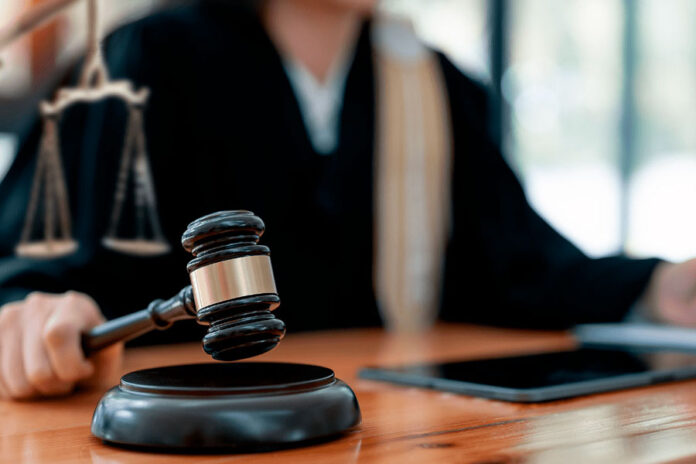PHILADELPHIA. – United States Attorney Jacqueline C. Romero announced that Gregory Thomas White Jr, DC and Healing Place Medical, P.C. (collectively, “Healing Place”) agreed to pay $170,000 to resolve liability under the False Claims Act for the alleged improper billing of “Sanexas” devices. This settlement is the latest action in the national investigation into the improper billing involving the RST Sanexas neoGEN-Series device (“Sanexas”).
Healing Place is a chiropractic clinic that principally used Sanexas treatment for patients diagnosed with edema and other forms of acute and chronic pain. Sanexas is an electric stimulation device marketed by RST Sanexas, Inc. (“RST”) to treat various forms of pain and other medical conditions. It consists of a large central unit and electrical leads that are temporarily affixed to the area being treated.
Patients typically received treatment on an outpatient basis and received two treatments per week for 12 weeks, for a total of approximately 24 treatments. Treatment times generally lasted approximately 30 to 40 minutes. In conjunction with Sanexas treatment, the clinics injected patients with a vitamin blend.
White is a chiropractor and owner of the Healing Place, which operated at 1600 Horizon Drive #123, Chalfont, Pa. The United States contends that Healing Place submitted approximately 27,121 claims to Medicare for payment under various codes for Sanexas treatment and vitamin injections, TM Flow testing, and ENFD testing, during the relevant time period, all of which were non-reimbursable.
The United States contends that Medicare did not permit reimbursement of Sanexas or vitamin injections used in conjunction with Sanexas in the way in which Healing Place administered them. In particular, National Coverage Determination 160.7.1 states: “Electrical nerve stimulation treatments furnished by a physician in his/her office, by a physical therapist or outpatient clinic are excluded from coverage by § 1862(a)(1) of the Act.”
Similarly, Local Coverage Determination (“LCD”) 35222 reinforces that “[t]he use of electrostimulation alone for the treatment of multiple neuropathies or peripheral neuropathies caused by underlying systemic diseases is not medically reasonable and necessary.” Other LCDs contain the same or similar statements, such as L35456, L35457, L37642, and L36850.
The United States Food and Drug Administration cleared Sanexas as substantially equivalent to a transcutaneous electrical nerve stimulator (“TENS”) on or around January 24, 2003. Sanexas treatment was not FDA-cleared for use in combination with vitamin injections, the vitamin blend was not FDA-approved, and the vitamin blend was produced in bulk, rather than prescribed for individual patients.
The United States contends that vitamin injections used in conjunction with Sanexas treatment as Healing Place administered them do not fall under the limited coverage available for prescription drugs under Medicare Part B. The LCDs noted above reinforce that vitamin injections that act as nerve blocks are not medically reasonable and necessary.
Healing Place also submitted Medicare claims for testing used in conjunction with electric stimulation treatment – ENFD testing and/or TM Flow testing. ENFD testing involves performing a punch biopsy on patients to purportedly evaluate nerve damage that could be treated with the Sanexas device. ENFD testing was also conducted after Sanexas treatment, purportedly to evaluate whether there has been an improvement to nerve health. The Sanexas device, however, is not FDA-cleared for healing or regrowing nerves. In addition, the United States alleges that it was not medically reasonable or necessary to conduct additional testing related to electrical stimulation treatment, which was not covered by Medicare in the way in which Healing Place administered it.
Healing Place also offered “TM Flow” testing to screen new patients for various diseases, which, if identified, could purportedly support the need for electric stimulation treatment using the Sanexas device. The TM Flow device conducts various autonomic nervous system (“ANS”) and vascular function assessments. The applicable LCD includes 10 limitations, which the United States contends render ANS testing not medically reasonable and necessary and not covered, including “patient screenings without signs or symptoms of autonomic dysfunction,” testing where “results are not used in clinical decision-making and patient management,” and testing without the competence in the Autonomic Disorders medical subspecialty. See L35395. LCDs L23236, L33609, and L35124 contain similar limitations. Contrary to these limitations, however, Healing Place used it to screen patients during an initial visit, offered treatment with the Sanexas device regardless of the results of TM flow testing, and lacked the necessary training to perform and interpret ANS testing.
“Our office continues to lead the national charge to hold alleged fraudsters accountable for improper Sanexas billing,” said U.S. Attorney Romero. “We will continue working closely with our partners at CMS’s Center for Program Integrity, the Department of Health and Human Services Office of the Inspector General, and sister U.S. Attorney’s Offices around the country to hold accountable any other providers who inappropriately billed for these devices and caused false claims to be submitted.”
“Accurately billing for services provided to Medicare enrollees is required of all health care providers participating in the program,” said Maureen R. Dixon, Special Agent in Charge for the U.S. Department of Health and Human Services, Office of Inspector General (HHS-OIG). “HHS-OIG, CMS’s Center for Program Integrity, and the U.S. Attorney’s Office will continue to evaluate and pursue allegedly inaccurate billings of Sanexas and similar devices.”
Prior DOJ press releases related to the Sanexas national initiative include:
- https://www.justice.gov/usao-edpa/pr/two-doctors-and-their-medical-practice-pay-more-181000-resolve-false-claims-act
- https://www.justice.gov/usao-edpa/pr/us-attorney-announces-two-additional-civil-settlements-part-national-effort-combat
This matter was investigated by the U.S. Department of Health and Human Services Office of the Inspector General. The investigation and settlement were handled by Special Assistant U.S. Attorney Eric S. Wolfish, Civil Division Chief Gregory B. David, and Auditors Dawn Wiggins and Andrew Schobert.
The settled civil claims are allegations only. There has been no determination of civil liability.







